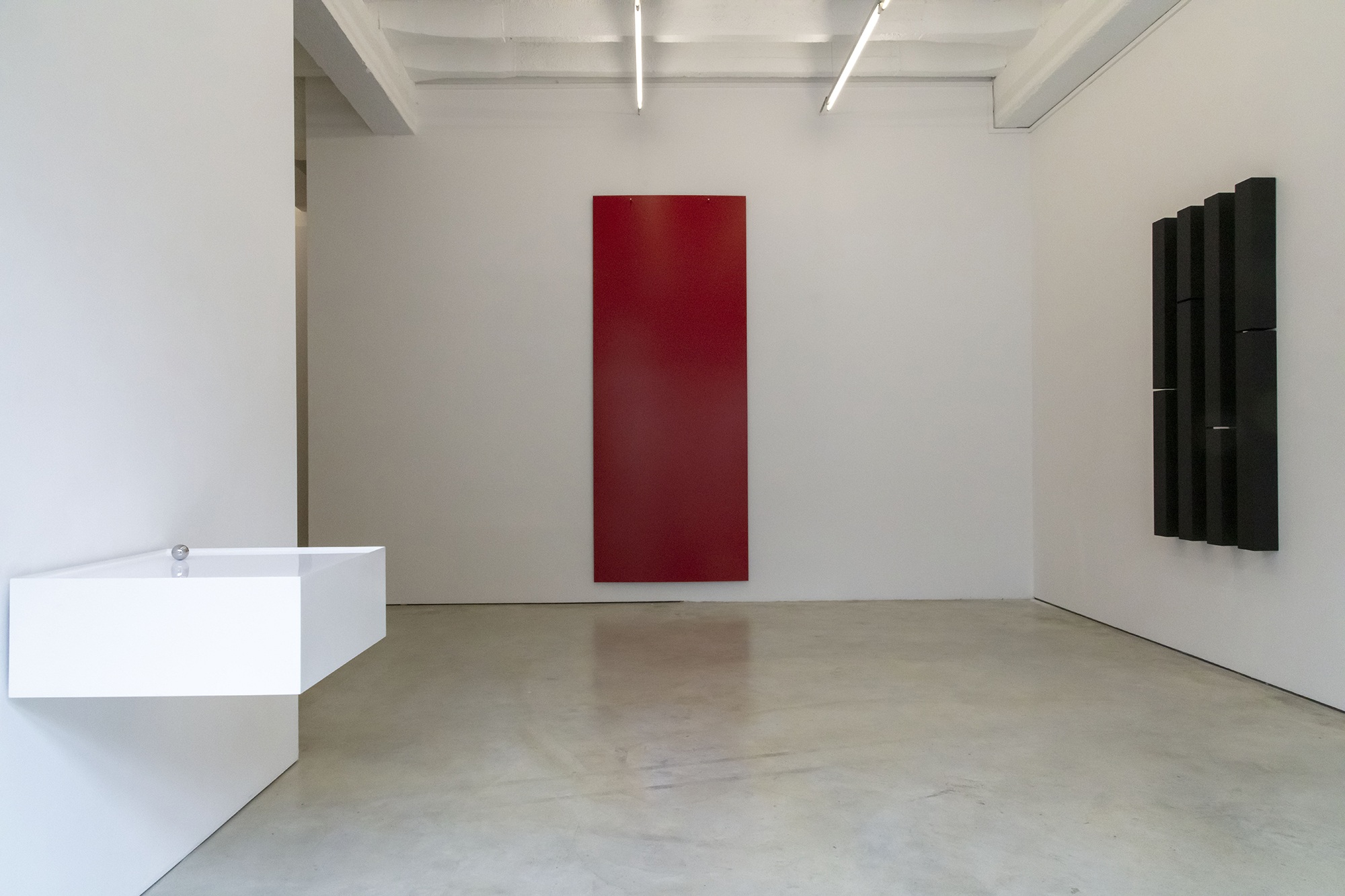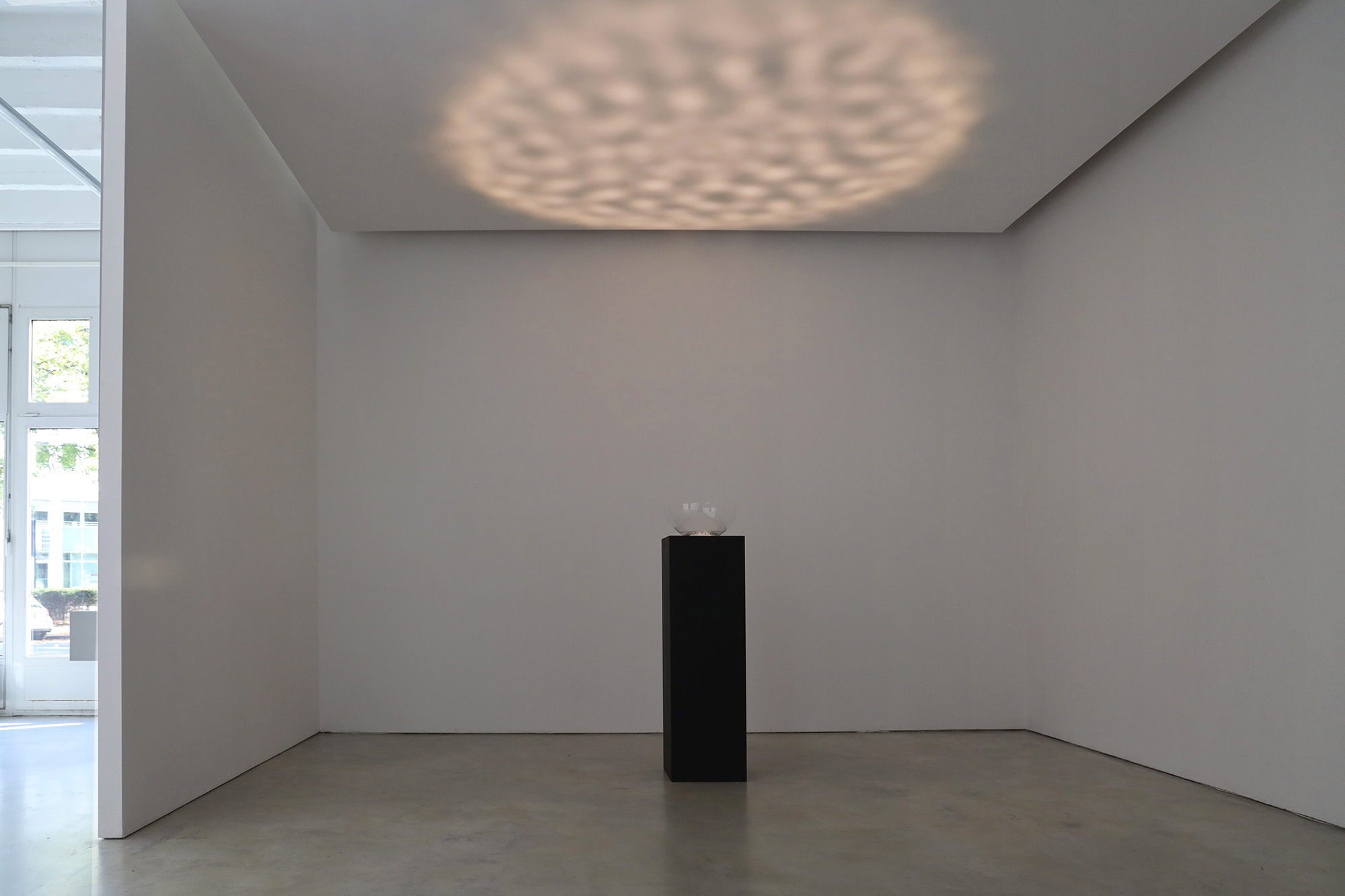Exhibition: 10 September - 23 October 2021
Venue: Persons Projects, Lindenstr. 35, 10969 Berlin
Opening: 17 September 2021
Persons Projects proudly presents Finnbogi Pétursson’s solo exhibition Silent Silence. The works selected for this exhibition reflect the various ways in which Pétursson experiments with movement and sound to explore silence as a concept for thought and being. His minimalistic installations make the primary natural forces visible, audible, and tangible. Though, surrounding us all the time, being fundamental for our life on earth, they are yet hidden from our perception: sound waves, the pulsation of light, and the rotating movement of electrons. In this exhibition, silence has a similar appearance as white light in Isaac Newton’s experiments: Pétursson's works act like a prism that lets us experience silence in all its facets of the visible (and audible) spectrum.
Finnbogi Pétursson is one of the leading contemporary artists in
Iceland. In his works he creates a bridge between science, nature, and
art, examining the very essence of light, sound, and energy through
minimalistic installations. Pétursson refers to himself as a visual
artist interested in the behavior of sound, rather than an audio artist.
Looking to physics as a source of inspiration, he is drawn to what he
calls "the in-between" – the movement of sound waves between input and
output, and how one can manipulate it. His experiments often culminate
in large installations where different elements and materials perform
together in perfect orchestral harmony, with each one revealing the
fundamental properties of the other. His ability to illustrate the
intangible and invisible has become a trademark in his work.
Logg
Loops illustrates what is central in all of Pétursson’s works: the
transitions between the visible and the audible, the area where those
qualities intermingle and elude clear categorization. For this
wall-piece, Pétursson has gathered old tapes of Icelandic radio
broadcasts from the 1980s. At that time Icelandic authorities pursued
the goal of archiving all Icelandic media products. However, as this
proved to be an utterly hopeless task, what had been archived so far was
left to decay. After years of closed storage, these reels have turned,
due to chemical processes, into a sort of cement. If their murmur can be
played at all, they will only be played once. After that, the tape will
be ruined. Thus, the infinite loop has in this work no sonic quality
but a visual one in the way the tapes are montaged by the artist: he
glued the ends of the tapes to the beginnings. The technical handling of
time in the analog procedure of tape montage, in which audio tapes are
precisely glued together, appears simple and yet poetic at the same
time.
The exhibition Silent Silence centers around the questions: how
can one preserve time? And how would it feel if one could halt time for
a moment and store it as deep as in the center of the earth? In their
visual simplicity, the works are reminiscent of minimalist drawings,
which emphasize the ephemeral nature of sound. Pétursson's kinetic installations
seem to function effortlessly, not burdened by the overwhelming weight
of technical baggage – just like gravity itself. In Square-Sphere,
seemingly out of nowhere a magnetic sphere is slowly moving in a circle
on the liquid surface of a white square-shaped box creating a geometric
drawing. Two geometric forms interplay in a simple, yet elementarily
beautiful manner. Pétursson creates a moment in which barriers blur, in
which opposites become one. What seems beautiful in its simplicity,
actually requires a complex technical mechanism. For instance, the top
of the box has to be strong enough to hold the liquid and yet thin
enough for the magnetic ball to reach for the magnet inside.
In the
spatial installation Still, an acrylic bowl filled with water is
illuminated from below. Two generated frequencies cause the water to
vibrate. The reflection on the ceiling makes this vivid movement of
sound waves visible. In composing two interfering frequencies, Pétursson
creates moments in which sound waves seem to freeze for a second, just
to immediately turn again into a vibrating movement. This is what it
could look like if we could halt time.
Close to this installation, a red colored aluminum plate vibrates and generates sounds that seem to
directly capture the rumbling sound of the middle of the earth. In
Newton Red, Pétursson refers to Newton’s discovery of the visible
spectrum and invention of the color wheel in 1704. Newton’s color wheel
follows the concept of linking color notation to music notation, that
means he included musical notes correlated with color. The circle begins
with red and is divided by the musical scale. According to this theory,
Pétursson chose the tone C as an oscillating frequency to let the metal
plate drone.
In Pétursson’s most recent work Octotraps, black wooden
boxes serve as monuments of frequencies, capturing soundwaves from the
surrounding which are usually inaudible to the human ear. Each box
responds to a certain wave and allocates its particular frequency. In
the gaps between them, the interfaces, the soundwaves overlap in silent
interference waves – creating an oscillating soundscape of the
exhibition space. On the whole Silent Silence draws upon what’s
essential in any given moment in time – leading to a silent space within
all of us, digging down to the center of being, by experiencing the
vivid interplay of Pétursson’s installation works.
Finnbogi
Pétursson was born in Reykjavik, Iceland, in 1959. His works have been
exhibited in various solo and group exhibitions, among others at
Reykjavík Art Museum (Reykjavik, 2019), Quint Gallery (La Jolla, 2016),
Wood Street Galleries (Pittsburgh, 2014), Marrakesh Biennale (Marrakesh,
2012), Sean Kelly gallery (New York, 2009), i8 Gallery (Reykjavik,
2006), Kunstverein Ludwigsburg (Ludwigsburg, 2005), The Museum of Modern
Art (Salzburg, 2004) and the Venice Biennale (Venice, 2001).
Image: Finnbogi Pétursson, Sphere, 2003, photo: Joey Kennedy
Supported by 




